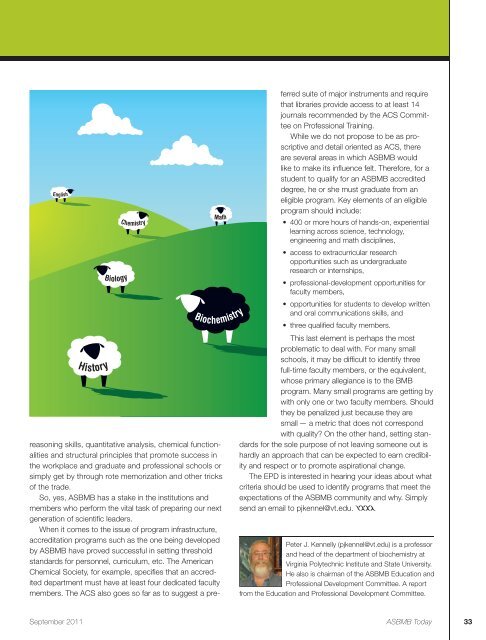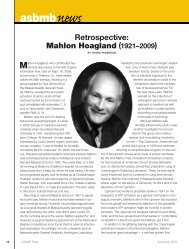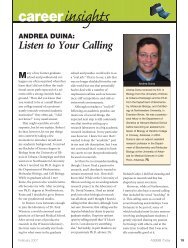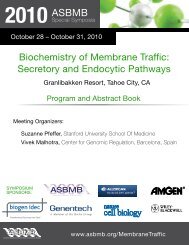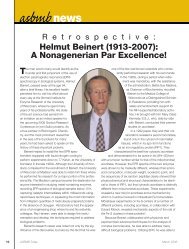asbmbnews
asbmbnews
asbmbnews
You also want an ePaper? Increase the reach of your titles
YUMPU automatically turns print PDFs into web optimized ePapers that Google loves.
English<br />
History<br />
Biology<br />
Chemistry<br />
Math<br />
Biochemistry<br />
reasoning skills, quantitative analysis, chemical functionalities<br />
and structural principles that promote success in<br />
the workplace and graduate and professional schools or<br />
simply get by through rote memorization and other tricks<br />
of the trade.<br />
So, yes, ASBMB has a stake in the institutions and<br />
members who perform the vital task of preparing our next<br />
generation of scientific leaders.<br />
When it comes to the issue of program infrastructure,<br />
accreditation programs such as the one being developed<br />
by ASBMB have proved successful in setting threshold<br />
standards for personnel, curriculum, etc. The American<br />
Chemical Society, for example, specifies that an accredited<br />
department must have at least four dedicated faculty<br />
members. The ACS also goes so far as to suggest a pre-<br />
ferred suite of major instruments and require<br />
that libraries provide access to at least 14<br />
journals recommended by the ACS Committee<br />
on Professional Training.<br />
While we do not propose to be as proscriptive<br />
and detail oriented as ACS, there<br />
are several areas in which ASBMB would<br />
like to make its influence felt. Therefore, for a<br />
student to qualify for an ASBMB accredited<br />
degree, he or she must graduate from an<br />
eligible program. Key elements of an eligible<br />
program should include:<br />
• 400 or more hours of hands-on, experiential<br />
learning across science, technology,<br />
engineering and math disciplines,<br />
• access to extracurricular research<br />
opportunities such as undergraduate<br />
research or internships,<br />
• professional-development opportunities for<br />
faculty members,<br />
• opportunities for students to develop written<br />
and oral communications skills, and<br />
• three qualified faculty members.<br />
This last element is perhaps the most<br />
problematic to deal with. For many small<br />
schools, it may be difficult to identify three<br />
full-time faculty members, or the equivalent,<br />
whose primary allegiance is to the BMB<br />
program. Many small programs are getting by<br />
with only one or two faculty members. Should<br />
they be penalized just because they are<br />
small — a metric that does not correspond<br />
with quality? On the other hand, setting standards<br />
for the sole purpose of not leaving someone out is<br />
hardly an approach that can be expected to earn credibility<br />
and respect or to promote aspirational change.<br />
The EPD is interested in hearing your ideas about what<br />
criteria should be used to identify programs that meet the<br />
expectations of the ASBMB community and why. Simply<br />
send an email to pjkennel@vt.edu.<br />
Peter J. Kennelly (pjkennel@vt.edu) is a professor<br />
and head of the department of biochemistry at<br />
Virginia Polytechnic Institute and State University.<br />
He also is chairman of the ASBMB Education and<br />
Professional Development Committee. A report<br />
from the Education and Professional Development Committee.<br />
September 2011 ASBMB Today 33


